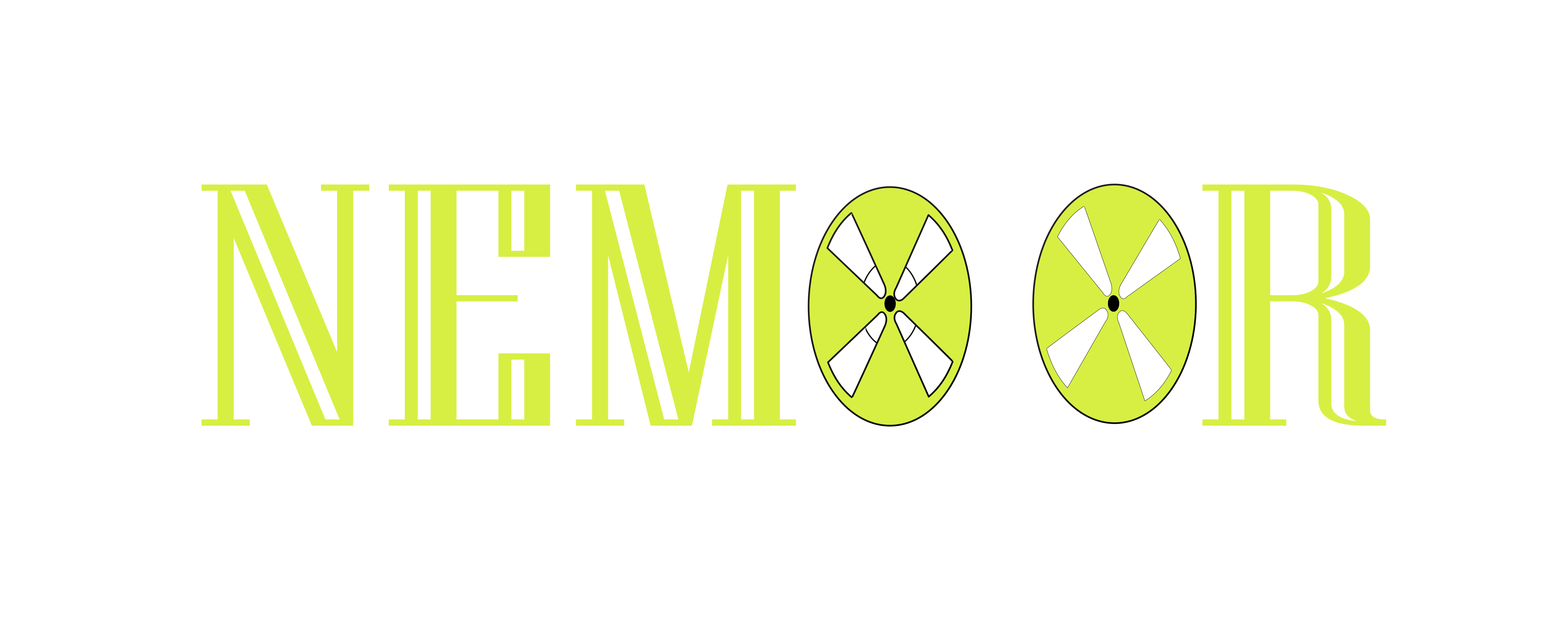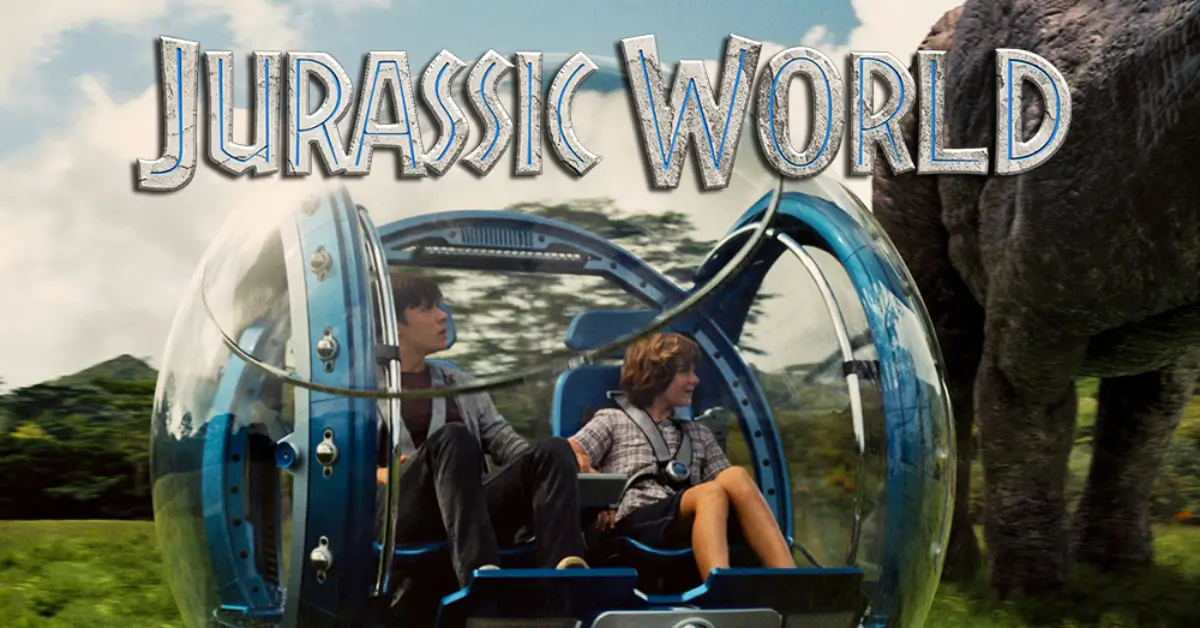Primal Fear: Mental Health Themes in Jurassic World
When watching Jurassic World, most viewers are understandably captivated by the spectacle of dinosaurs roaming free in a modern setting. However, beneath the thrilling action sequences and impressive CGI lies a surprisingly rich examination of human psychology. The fourth installment in the Jurassic Park franchise offers intriguing insights into trauma, anxiety, control, and our fundamental relationship with nature all of which have significant implications for our understanding of mental health in contemporary society.
Thank you for reading this post, don't forget to subscribe!Basic Film Information
Title: Jurassic World
Release Date & Production Year: June 12, 2015
Director: Colin Trevorrow (Known for his work in science fiction with human relationship themes)
Screenwriters: Rick Jaffa, Amanda Silver, Colin Trevorrow, and Derek Connolly (No specific background in mental health writing)
Main Cast & Characters:
- Chris Pratt (Owen Grady) – A velociraptor trainer with unique understanding of animal psychology
- Bryce Dallas Howard (Claire Dearing) – Operations manager struggling with control issues and emotional distance
- Vincent D’Onofrio (Vic Hoskins) – Security chief with power fixation and militaristic mindset
- Ty Simpkins (Gray Mitchell) – Child processing parental divorce through scientific understanding
- Nick Robinson (Zach Mitchell) – Teenager dealing with family dynamics and identity formation
- Irrfan Khan (Simon Masrani) – Park owner caught between wonder and responsibility
Genre: Science fiction adventure
Awards: Various technical awards for visual effects; nominated for Academy Award for Best Visual Effects
Runtime & Rating: 124 minutes; PG-13 (intense sequences of science-fiction violence and peril)
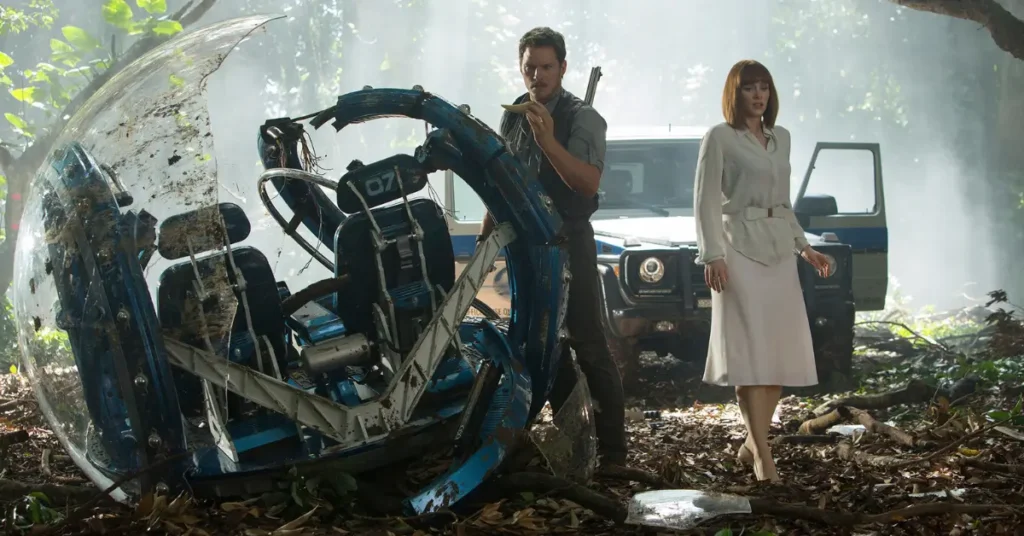
Plot Summary (Brief, No Spoilers First, Then Deeper Dive)
General Overview:
Twenty-two years after the events of the original Jurassic Park, Isla Nublar is now home to a fully functioning dinosaur theme park as originally envisioned by John Hammond. When attendance begins to decline, the corporate owners approve the creation of a genetically modified hybrid dinosaur to boost visitor numbers. This decision sets off a chain of catastrophic events that force the characters to confront both prehistoric predators and their own psychological vulnerabilities.
Mental Health Themes:
The film quietly explores several psychological dimensions:
- Anxiety and stress responses to trauma and extreme fear
- Control versus adaptation as coping mechanisms
- Emotional compartmentalization and its consequences
- Relationship attachment styles (particularly avoidant versus secure)
- Risk assessment and denial as psychological defense
- Childhood processing of family disruption
- Hubris and its psychological underpinnings
Key Turning Points:
- Claire’s transformation from rigid control to adaptive response
- The moment Owen’s relationship-based training is tested against primal instinct
- Gray and Zach’s shifting dynamic under threat, revealing deeper sibling bonds
- The corporate decision to prioritize spectacle over safety, reflecting collective denial
- The climactic recognition that some forces cannot be controlled, only respected
Ending Analysis:
The film concludes with characters who have undergone significant psychological shifts. Claire moves from rigid control to embracing uncertainty, while various characters learn the limits of human dominance over nature. This resolution suggests a mental health message about adaptation versus control that psychological well-being sometimes requires accepting that not everything can be managed, predicted, or contained.
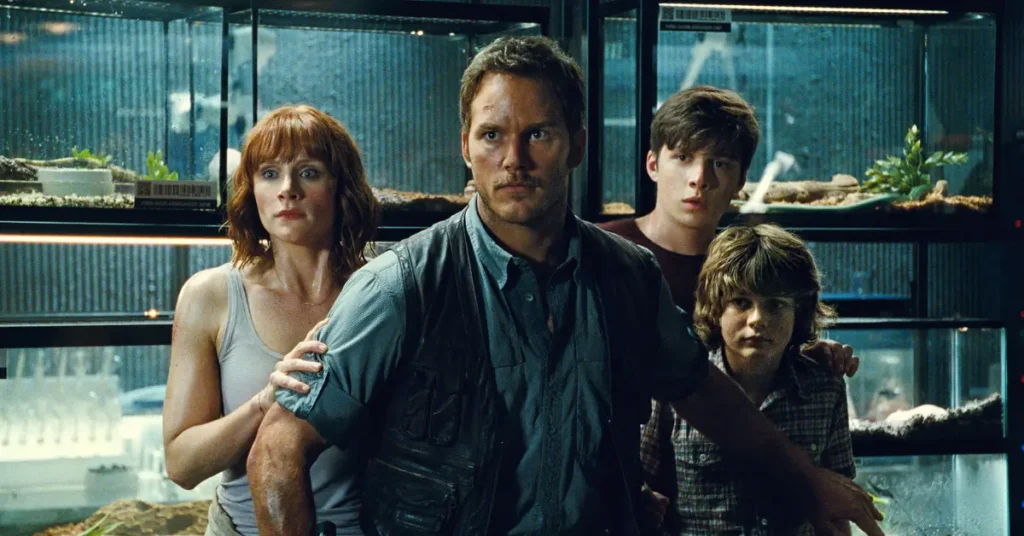
Setting & Cinematic Techniques
Filming Locations:
The controlled environment of the theme park represents humanity’s illusion of mastery over nature and emotion, while the encroaching jungle symbolizes the uncontainable aspects of both the natural world and the human psyche.
Cinematography:
Director of Photography John Schwartzman employs visual techniques that enhance psychological themes:
- Contrasting rigid, geometric park architecture with organic, unpredictable jungle settings
- Increasingly chaotic camera movements as control systems fail
- Shots that emphasize human vulnerability through scale contrasts with dinosaurs
- Visual transitions from ordered to disordered environments mirroring psychological states
Sound & Music:
Michael Giacchino’s score (incorporating John Williams’ iconic themes) serves psychological functions:
- Musical cues signaling safety versus danger, mirroring human threat-detection systems
- Sound design highlighting the contrast between technological control and primal fear
- Audio transitions from corporate cleanliness to primal chaos
- Strategic silences amplifying moments of psychological realization
Acting & Character Portrayal
Lead Performances:
Chris Pratt portrays Owen as a character with a secure attachment style who understands the balance between respect and dominance, while Bryce Dallas Howard’s Claire undergoes a more dramatic psychological journey from emotionally distant control-seeker to adaptable, connected protector.
Supporting Cast:
The supporting characters represent various psychological responses to threat and uncertainty:
- Vincent D’Onofrio’s Hoskins embodies aggressive dominance as a response to fear
- The Mitchell brothers show different developmental stages processing familial change
- Irrfan Khan’s Masrani represents idealism confronting reality
- BD Wong’s Dr. Wu demonstrates compartmentalization and ethical disengagement
Authenticity Assessment:
While not explicitly focused on clinical mental health conditions, the film authentically portrays various stress responses, attachment styles, and psychological defenses that emerge under extreme conditions. The transformation of characters under pressure reveals realistic aspects of human psychology.
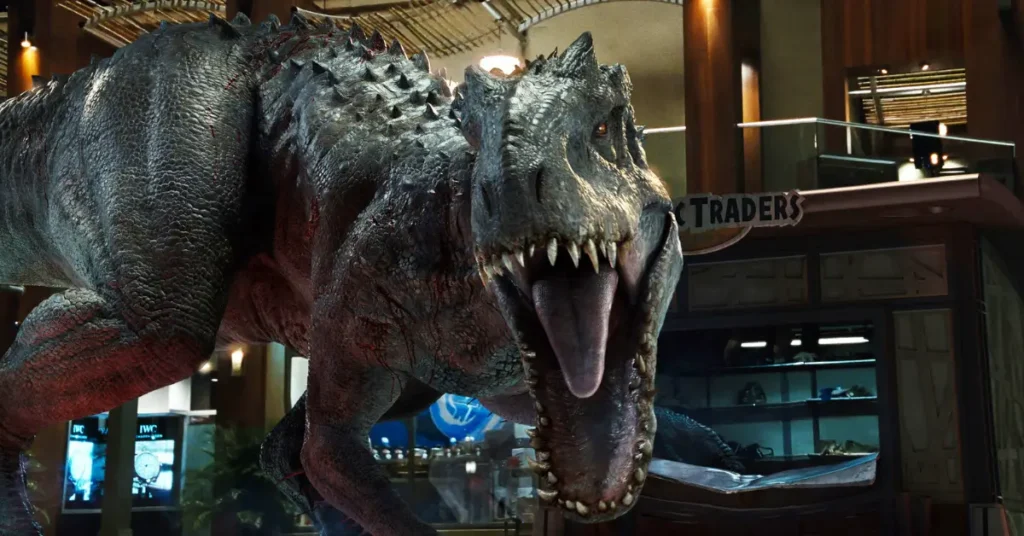
Mental Health Representation: Strengths & Weaknesses
Psychological Accuracy:
The film wasn’t developed with explicit mental health consultation, yet it accurately portrays:
- Fight-flight-freeze responses under threat
- How prior relationship patterns affect crisis behavior
- The psychological impact of believing one can control the uncontrollable
- Different attachment styles and their behavioral manifestations
Stigmatization vs. Awareness:
The film avoids pathologizing its characters’ psychological traits, instead presenting them as understandable adaptations to different circumstances. Characters’ psychological shifts are portrayed as growth rather than “fixing” something broken.
Impact on Public Perception:
While not typically viewed as a “mental health film,” Jurassic World offers accessible metaphors for psychological concepts like containment, projection, and adaptation that potentially increase audience understanding of these dynamics.
Critical Reception & Awards
Critics’ Reviews:
Critical reception (71% on Rotten Tomatoes) focused primarily on the film’s entertainment value and special effects rather than its psychological themes. However, some reviewers noted the character development, particularly Claire’s transformation from rigid control to adaptive protector.
Audience Reactions:
Audience discussions occasionally note the psychological elements, particularly how different characters respond to crisis and the underlying themes about human control versus adaptation.
Awards & Recognition:
The film received recognition primarily for technical achievements rather than storytelling or character development.
Cultural & Social Impact
Discussions Sparked:
While not explicitly about mental health, the film has prompted conversations about:
- Human hubris in believing we can control nature
- Corporate denial of risk for financial gain
- How different personality types respond to crisis
- The psychological appeal of dinosaurs as representatives of the uncontrollable
Influence on Other Films:
The film’s commercial success reinforced Hollywood’s interest in stories that combine spectacle with character development, though its specific psychological themes haven’t been widely replicated.
Indirect Advocacy:
Though not created as mental health advocacy, the film’s themes about adaptation versus rigid control align with contemporary psychological approaches that emphasize flexibility and resilience over perfect management of emotions and circumstances.
Personal Reflection & Final Thoughts
Jurassic World offers surprising insight into how humans psychologically process threat, uncertainty, and our relationship with forces beyond our control. The transformation of Claire from someone who manages life through schedules and distance to someone who adapts and connects represents a powerful metaphor for psychological flexibility.
I would recommend this film to those interested in pop culture explorations of control psychology and stress responses, though I would clarify that it’s primarily an action-adventure film with these elements as subtext rather than focus.
The portrayal could have been improved by:
- More explicit exploration of the psychological aftermath of trauma
- Deeper examination of how childhood experiences shape adult responses to threat
- Greater nuance in depicting varieties of anxiety responses
- More development of how previous Jurassic Park incidents affected collective psychology
Conclusion
Jurassic World offers more than dinosaur spectacle it presents a narrative about human psychology confronting forces beyond our control. In an era of increasing anxiety about climate change, technology, and other seemingly unmanageable threats, the film’s psychological message about the limits of control and the necessity of adaptation resonates beyond its entertainment value.
The film suggests that mental well-being sometimes requires acknowledging that life, like nature, “finds a way” beyond our careful containment strategies. In this sense, the dinosaurs serve as perfect metaphors for the aspects of human experience emotions, instincts, fears that cannot be fully contained by our modern systems of management and control.
What do you think about the psychological themes in Jurassic World? Do you see parallels between the characters’ responses to dinosaur threats and how people handle anxiety and uncertainty in everyday life? Share your thoughts in the comments below.
